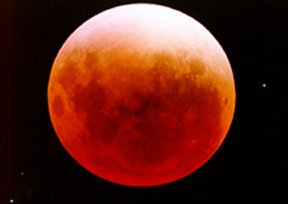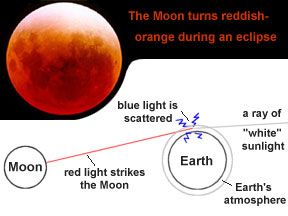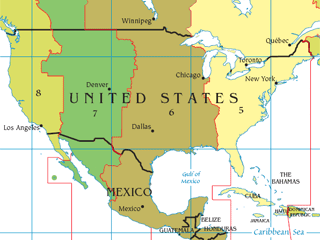This image explains how the Earth's shadow causes a lunar eclipse. Notice the difference between the umbra and the penumbra.
Click on image for full size
Windows to the Universe original image
Lunar Eclipses
A lunar eclipse is when the Earth's shadow blocks sunlight from reaching the Moon. It can only happen when there is a full moon. The Sun, Earth and Moon all need to be in a straight line too.
The Earth's shadow has two parts called the penumbra and the umbra. The umbra is much darker than the penumbra. When the Moon passes through the umbra, it is called a total eclipse.
When only part of the Moon passes through the umbra, it's called a partial eclipse. And when the Moon goes through the penumbra, it's called a penumbral eclipse. Have you seen an eclipse?
You might also be interested in:

There's a lunar eclipse this week! Thursday night, all of North America will see the eclipse. It starts at 10:00 pm Eastern Time. A lunar eclipse is different than a solar eclipse. During a lunar eclipse,
...more
There will be an eclipse of the Moon on Thursday night, May 15, 2003. The shadow of the Earth will fall on the Moon, and the Moon will get dark! The Moon will not be so dark that you can't see it. The
...more
There will be an eclipse of the Moon on Saturday night, November 8, 2003. The shadow of the Earth will fall on the Moon, and the Moon will get dark! The Moon will not be so dark that you can't see it.
...more
There will be an eclipse of the Moon on Wednesday night, October 27, 2004 (or the morning of the 28th if you are in Europe or Africa). The shadow of the Earth will fall on the Moon, and the Moon will get
...more
When it is noon where you live, it is midnight on the opposite side of the world. Usually when we think of time, we mean "the time of day where I live". If we say something happened at 9 AM, we mean it
...more











